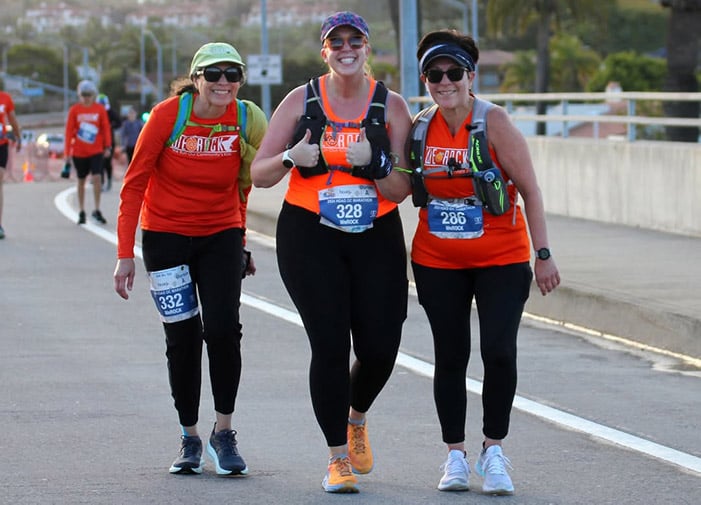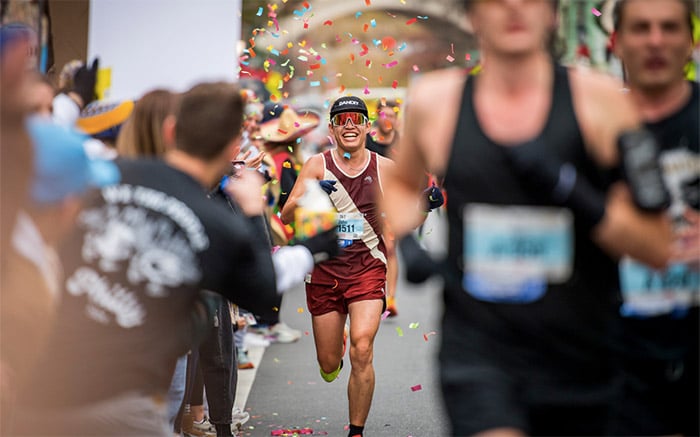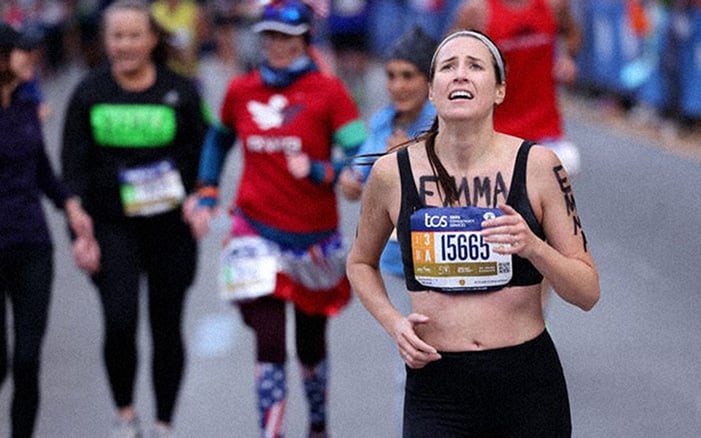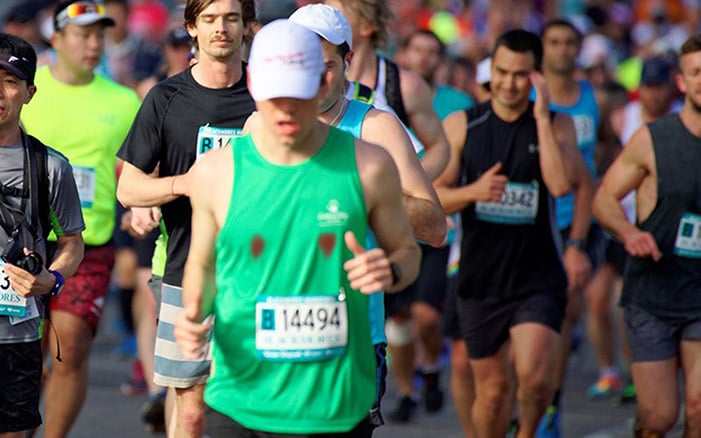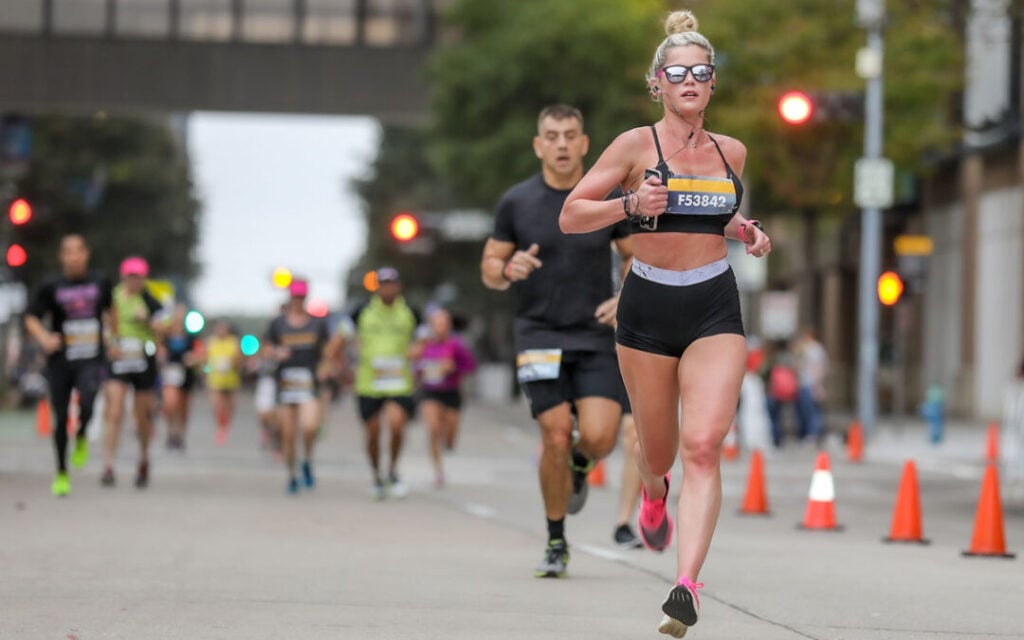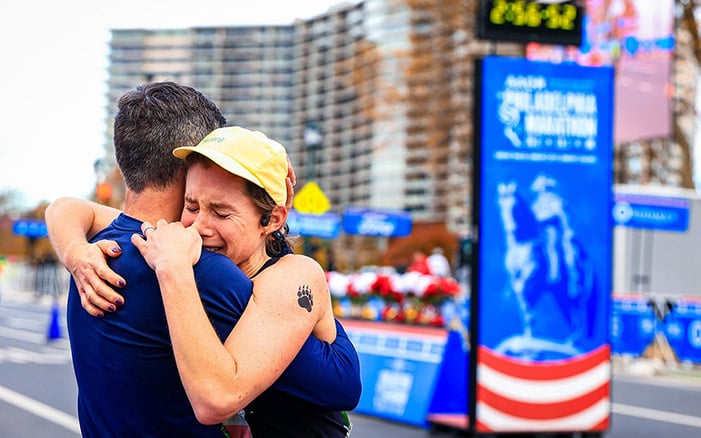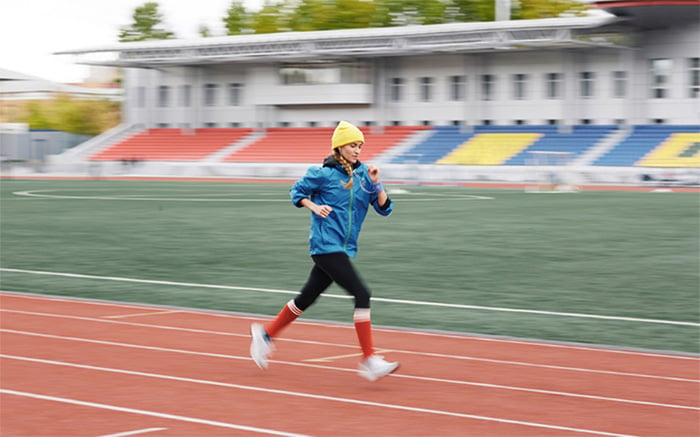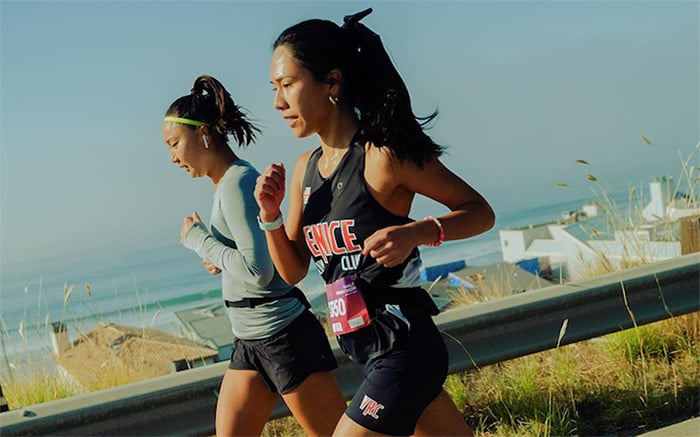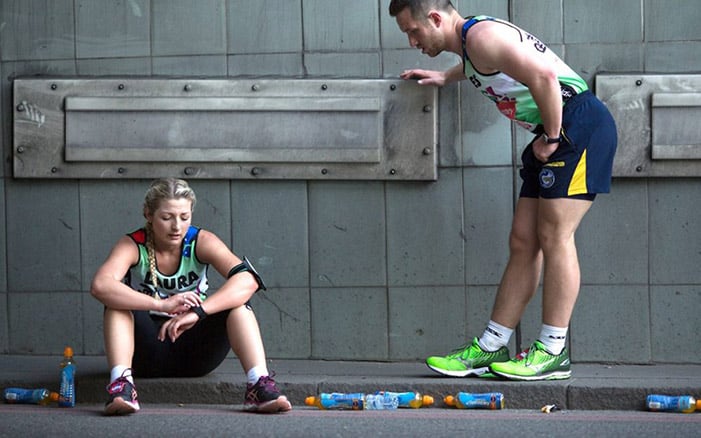Completing a half marathon or marathon takes a toll. Muscle fibers break down, inflammation ramps up, and glycogen stores run low. You may not feel it in the adrenaline-fueled hour after the finish, but over the next few days, your body will demand rest, fuel, and time to repair.
Runners often underestimate this phase. Some jump back into training too soon, hoping to maintain their fitness. Others do too little and feel sluggish when they return. Recovery doesn’t require guesswork. It requires structure.
This guide breaks down what to do—and when to do it—so you can return to running feeling stronger, not depleted.
Contents
Immediately after the finish line (0–2 hours)
- Keep moving
As tempting as it is to sit—or lie down on the pavement—resist the urge. Walk for at least 10–20 minutes after the race to keep blood flowing and prevent post-race dizziness. The gentle movement also helps flush out metabolic waste that accumulates during intense efforts.
- Rehydrate
Even in cool weather, fluid loss adds up. Sip water slowly and include electrolytes—especially sodium and potassium—to help restore balance.
Avoid drinking too much at once as chugging can upset your stomach. Space it out over the next couple of hours.
- Refuel with carbs and protein
Within 30–60 minutes, aim for a 3:1 ratio of carbohydrates to protein. This helps replenish glycogen and kickstart muscle repair.
Great options include a recovery shake, chocolate milk, a banana with nut butter, or a protein bar paired with fruit. They work well if you’re not ready for a full meal yet.
- Stay warm
Even if it’s warm outside, your body temperature can drop quickly after you stop moving. Change into dry clothes and layer up to avoid chills and support circulation.
- Skip the beer
Alcohol can delay muscle repair, increase dehydration, and interfere with sleep. If you want a celebratory drink, wait until you’ve rehydrated, eaten well, and rested.
Related: Beer After Running: Does It Help or Harm Recovery?
The first 24 hours
- Prioritize food and sleep
Your body is in rebuild mode and needs fuel—even if you’re not hungry right away. Support it with nutrient-dense meals and a full night of sleep—seven to nine hours, minimum. Eat balanced meals throughout the day with plenty of carbs, lean protein, and healthy fats.
Don’t cut calories just because your training is on pause. You still need energy for repair.
- Keep moving, but gently
Walks, light stretching, and short mobility sessions focusing on hips, calves, and hamstrings can help ease stiffness. Avoid deep massage or aggressive foam rolling—your muscles are inflamed and sensitive.
- Don’t panic about soreness
DOMS (delayed onset muscle soreness) usually peaks 24–48 hours after a hard race. It’s normal and part of the healing process. The key is to stay lightly active and avoid intense exercise during this window.
The first 3–4 days post-race
- Skip the runs
Even if you feel “fine,” your muscles, joints, and nervous system are still recovering. Take at least 3–4 full rest days after a half marathon, and closer to 5–7 after a marathon.
- Include gentle cross-training
Low-impact movement like walking, easy cycling, yoga, or swimming can boost circulation and help ease stiffness. Keep it light and enjoyable—this isn’t a workout, it’s active recovery.
- Watch for warning signs
Lingering soreness is normal. Sharp pain, swelling, or deep fatigue are not. If anything feels off or worse than expected, take a few extra days or check in with a physical therapist.
When and how to return to running
Most experts recommend taking three to seven days off, and then slowly coming back with short, easy runs.
Once you’ve rested, begin with a 2–3–mile (3–5 km) jog at a conversational pace. Stick to flat, soft surfaces and avoid pushing the pace—even if your legs feel fresh.
Add intensity gradually and don’t jump straight back into speed work or long runs. Build back volume and pace slowly. Wait until your body feels ready—and even then, give it another day.
If you tapered before the race, think of your return as the reverse. Start with lower mileage and gradually build back up over 2–3 weeks. Let your body lead, not your calendar.
Smart habits that will support your recovery
- Sleep is king
Prioritize sleep throughout the week—your body continues repairing tissue, balancing hormones, and restoring energy even days after the race.
- Gentle strength and mobility exercises
After 5–7 days, you can reintroduce bodyweight strength exercises and light mobility work. Keep the focus on form and range of motion—not weight or intensity.
- Hydration and quality nutrition
Even if your appetite is low, aim for regular meals and snacks rich in nutrients. Focus on anti-inflammatory foods: berries, leafy greens, fatty fish, nuts, and whole grains.
- Sports massage
Once the initial soreness fades (typically after 4–5 days), a gentle massage can help loosen tight muscles and improve circulation. Avoid aggressive deep tissue work too early.
Mental recovery
Post-race blues are common. You’ve spent months training with purpose, and suddenly there’s nothing on the calendar. It’s normal to feel a little ungrounded. Give yourself permission to rest mentally, not just physically.
Take time to reflect before jumping into what’s next. Write down how the race went, what you learned, and how you felt. If journaling isn’t your thing, even a thoughtful social media post can help you process the experience. These reflections are more than just closure—they’re useful insights for your next training cycle.
Setting a small goal can also help ease the transition. You don’t need to dive back into structured training, but something like a fun run, a weekend hiking trip, or a mobility challenge will keep your routine without pressure.
Related: 7 Recovery Myths Every Runner Should Ignore
Recovery after a marathon or half marathon means giving your body what it needs to bounce back stronger.
Quality nutrition, low-impact movement, rest, and sleep are your best recovery tools. What you do in the days and weeks after a race, shapes how you feel heading into your next one.

